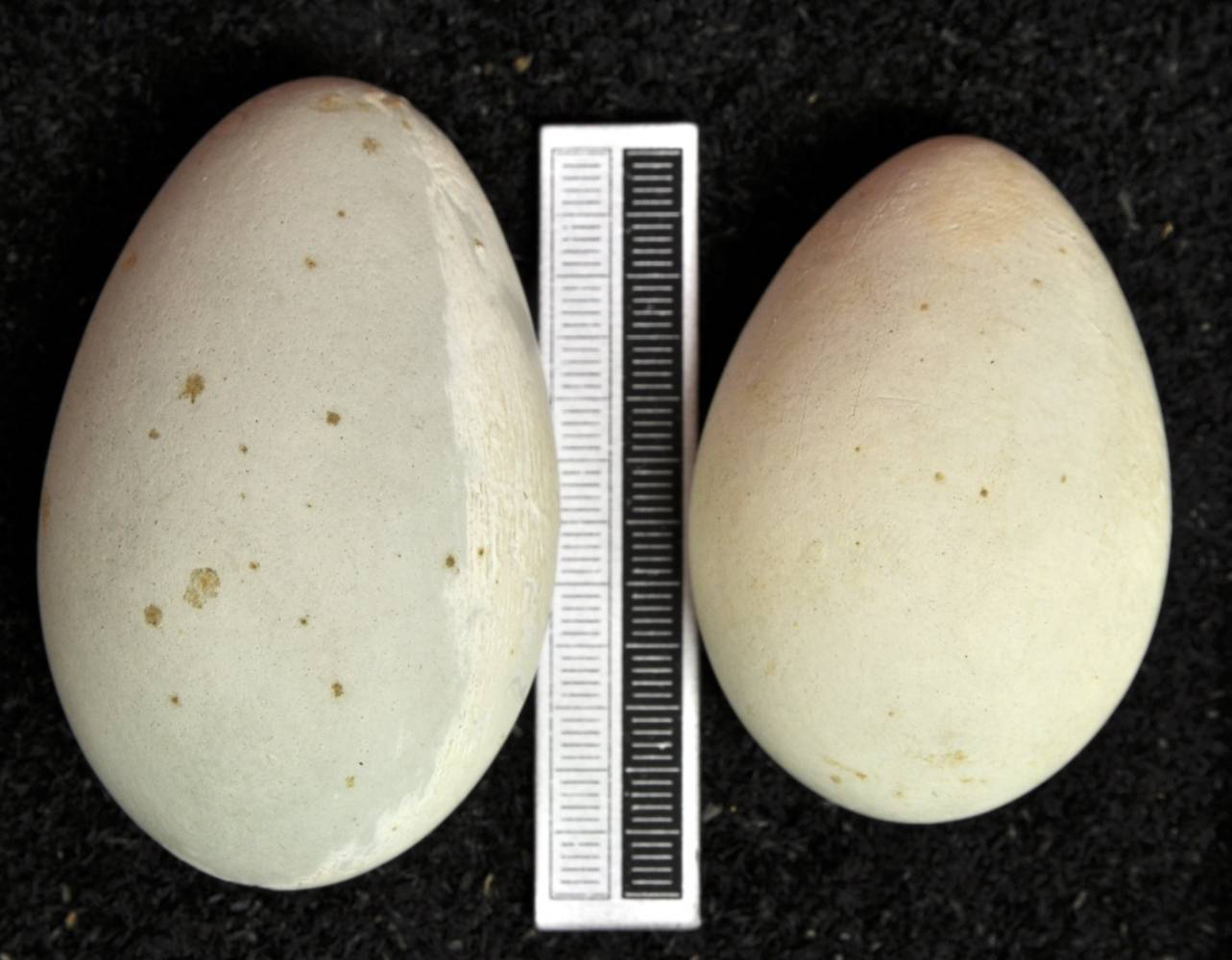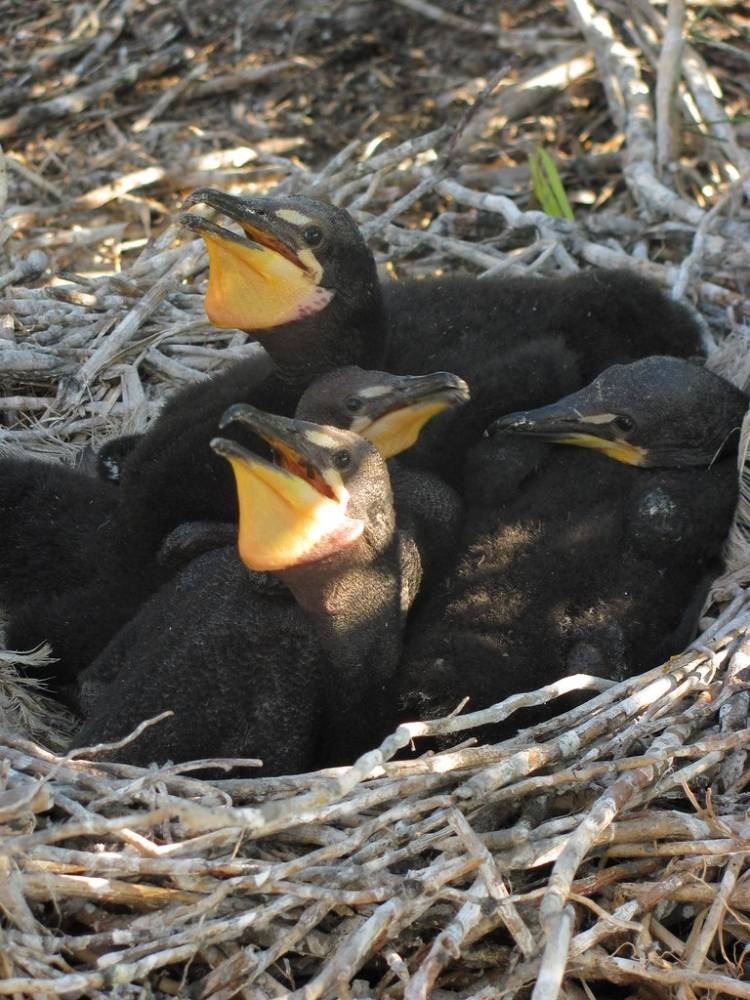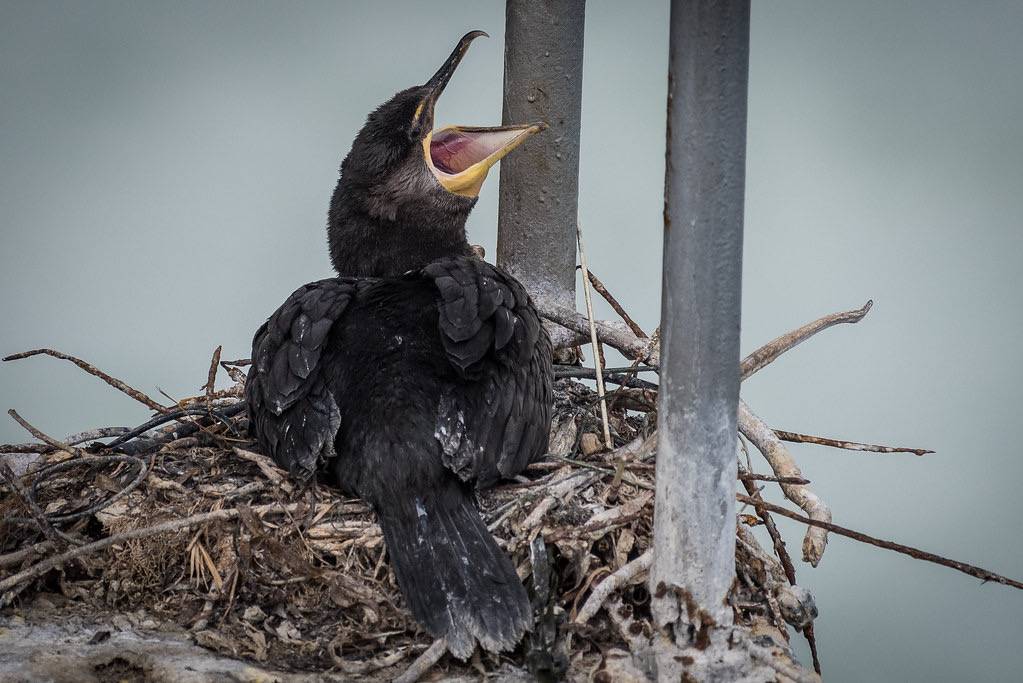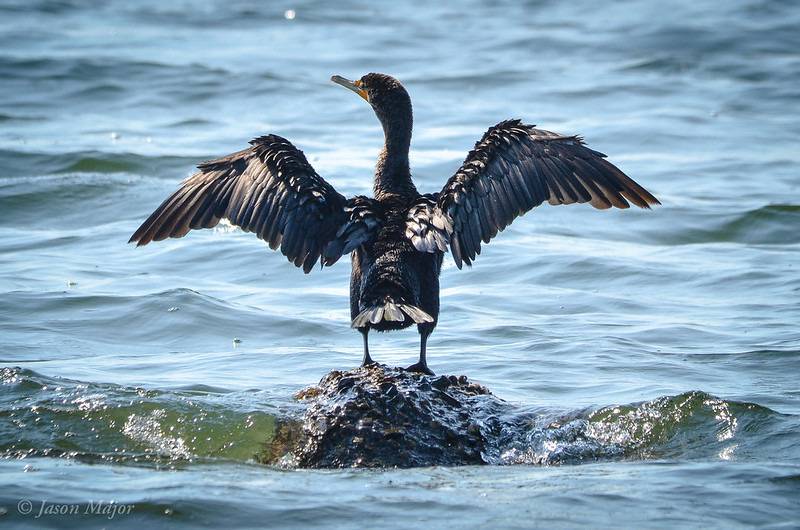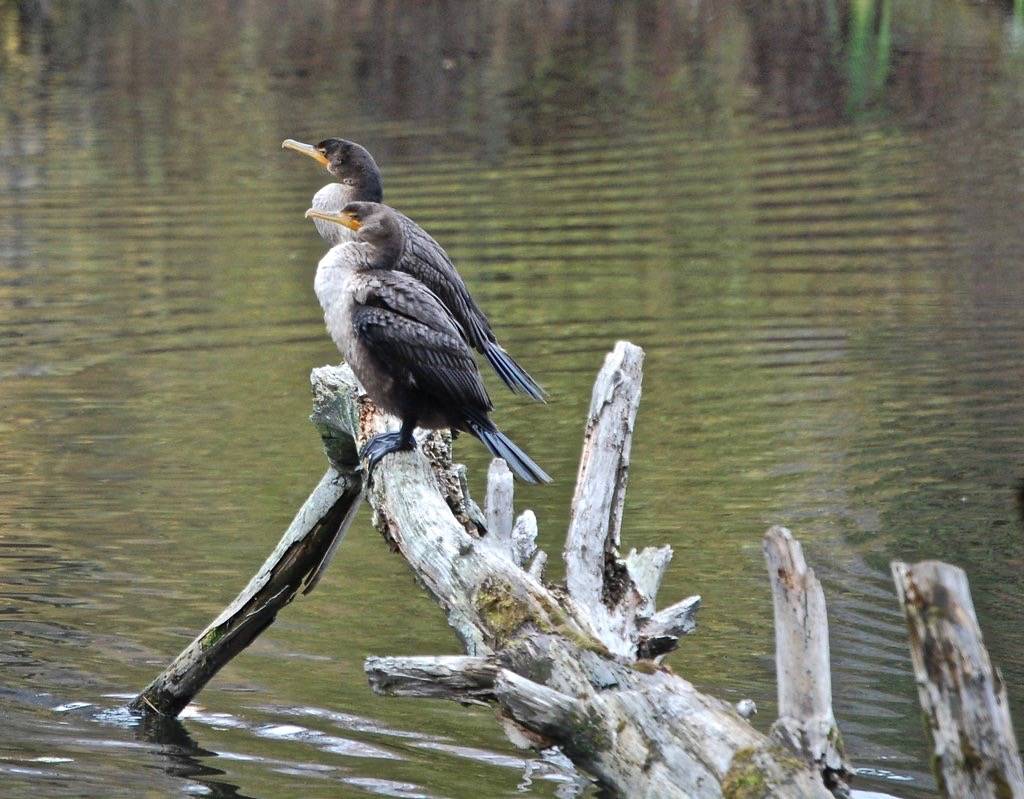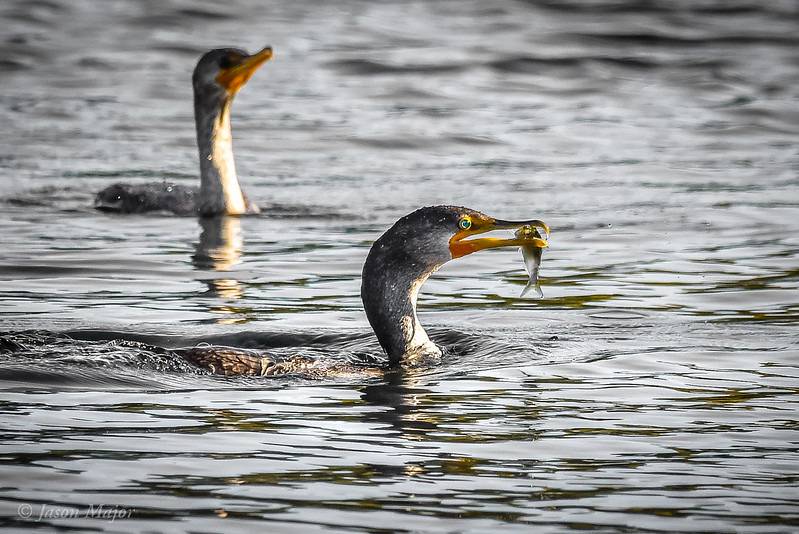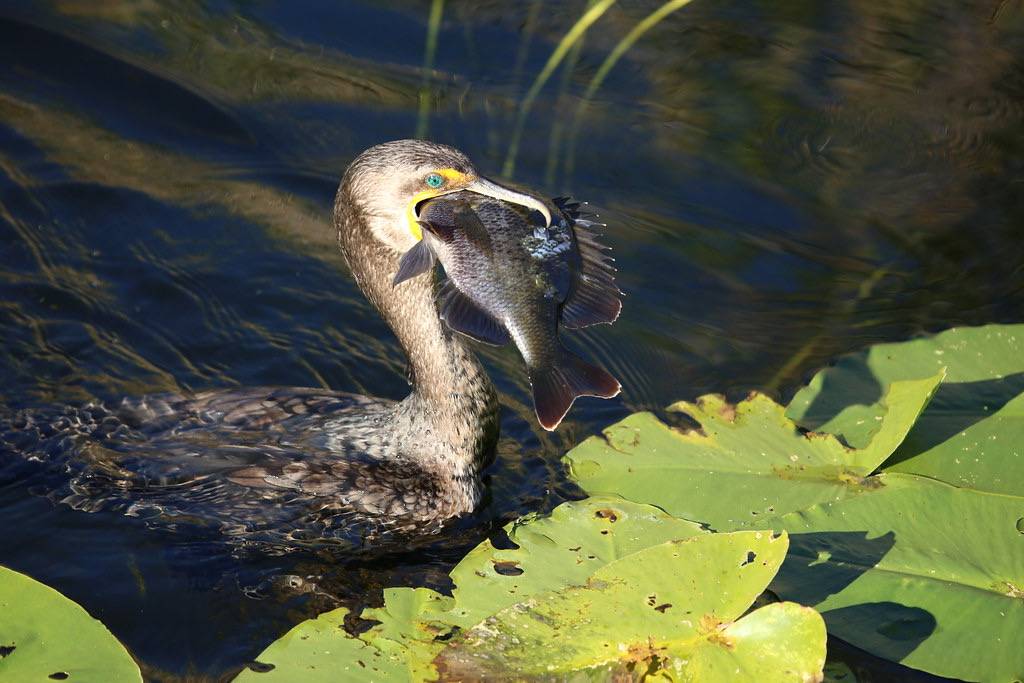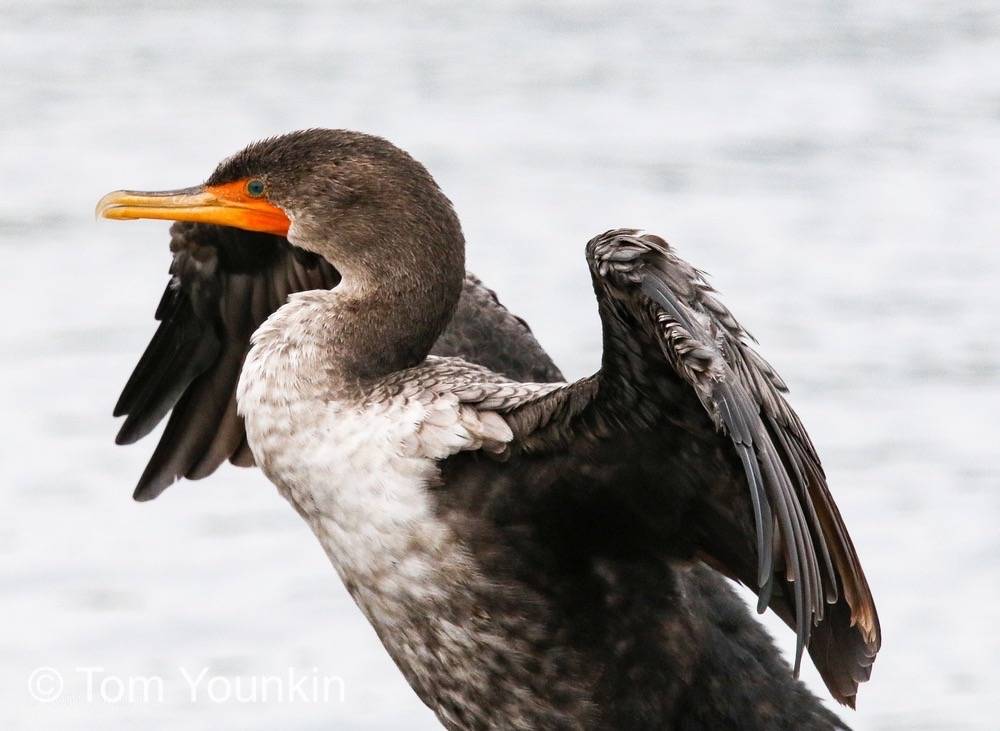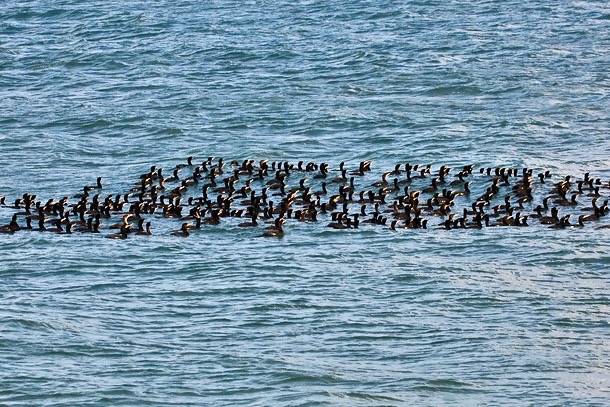Double-crested Cormorant
At Salter Grove, the prehistoric-looking Double-crested Cormorant is present in both North and South Coves from late April through November. The cormorants observed have dark adult plumage but probably are less than five years-old, the age when breeding begins. There is no evidence that cormorants breed in the park.
During their residency, a few to several dozens cormorants can be seen busily diving for fish, or flying back and forth between the boat moorings in North Cove and the rocky islets south of Rock Island.
Cormorants have less preen oil than other waterbirds and at low tide on a sunny day, exposed rocks are densely covered by cormorants holding up half-spread wings to dry. Peak numbers occur in October, when hundreds of mostly black post-breeding adults and grayish brown juveniles gather into large flotillas before leaving the park.
The Double-crested Cormorant is widespread across North America near rivers and lakes as well as in coastal areas. It ranges as far north as Southern Alaska and as far south as northwestern Mexico.
They are colonial nesters and will reuse a favorable stand of trees year after year. Over time however, the accumulation of excrement alter soil conditions and kills the trees. The cormorants have to either find a new site or nest on the ground where they would be prone to mammalian predators like coyotes, foxes, raccoons.
Like the Bald Eagle, the Double-crested Cormorant also suffered a steep population decline during the 1960's because the DDT they accumulated through the fish consumed resulted in eggs with very thin shells. They have recovered so well since the 1970's that the U.S. Fish and Wildlife Service now issues permits to cull nesting colonies where they are thought to be crowding out other colonial water birds like herons, or where they are adversely affecting fisheries.
For more information:
https://www.allaboutbirds.org/guide/Double-crested_Cormorant
https://www.audubon.org/field-guide/bird/double-crested-cormorant
https://en.wikipedia.org/wiki/Double-crested_cormorant
http://www.biokids.umich.edu/critters/Phalacrocorax_auritus/
https://web.stanford.edu/group/stanfordbirds/text/essays/Spread-Wing_Postures.html

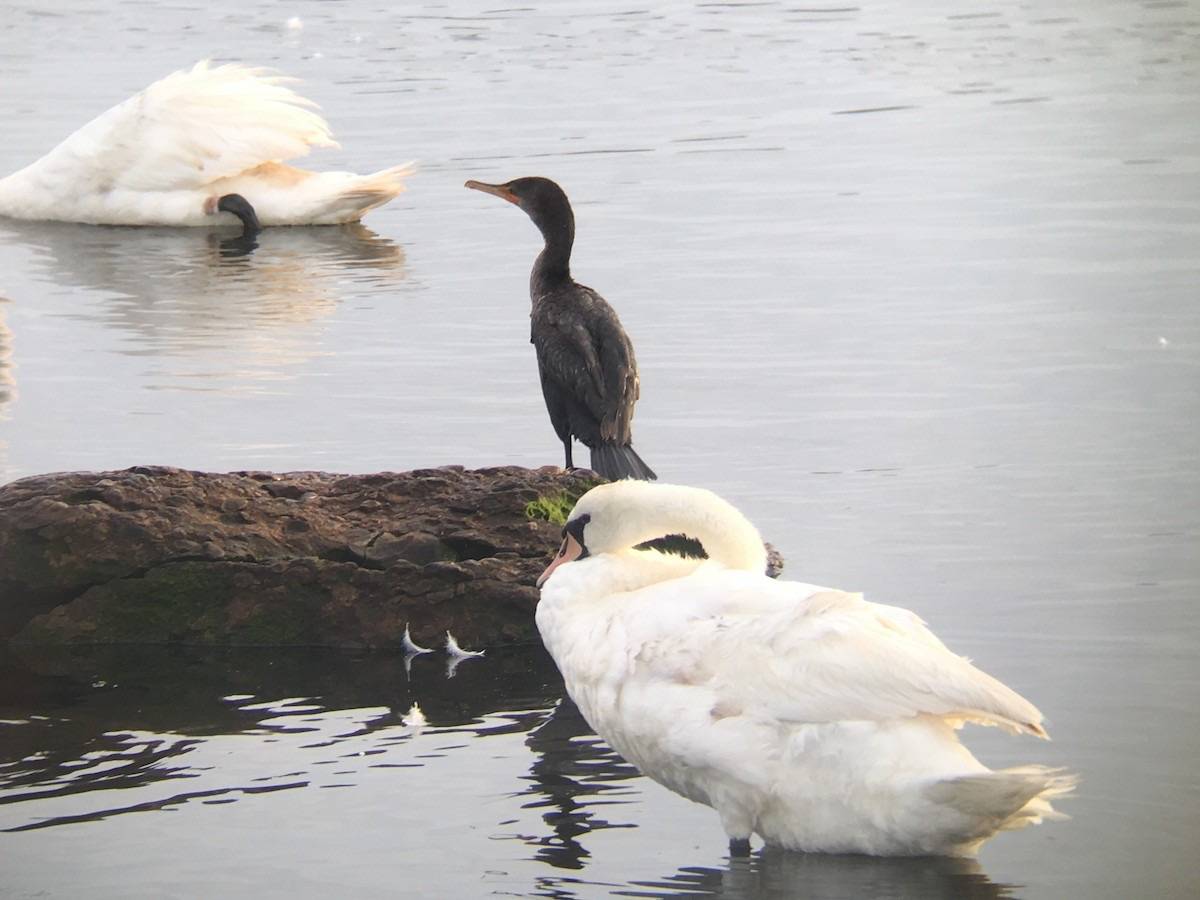
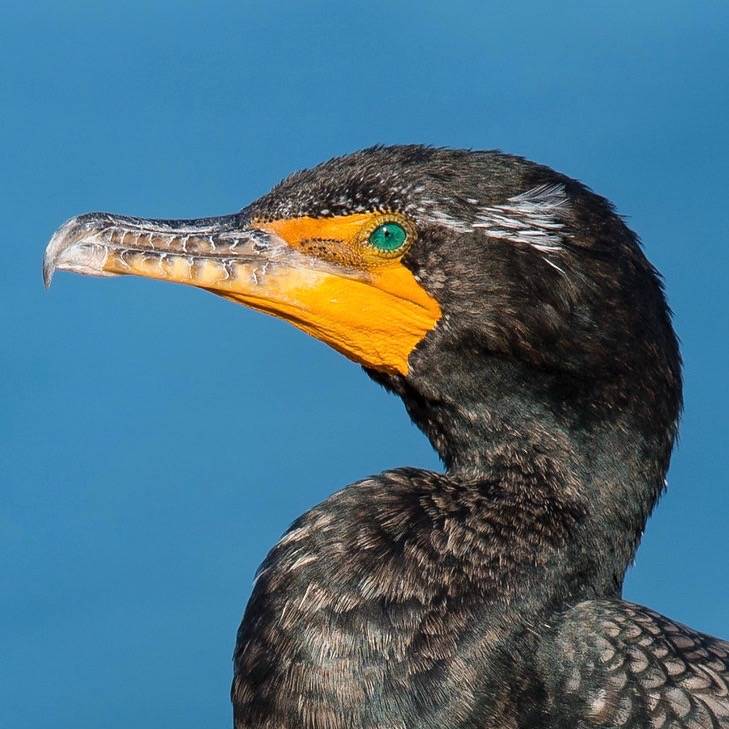
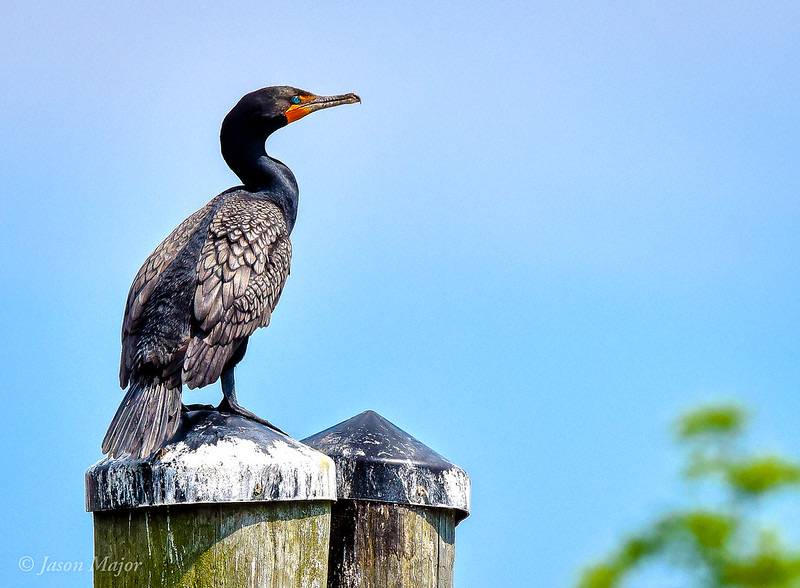
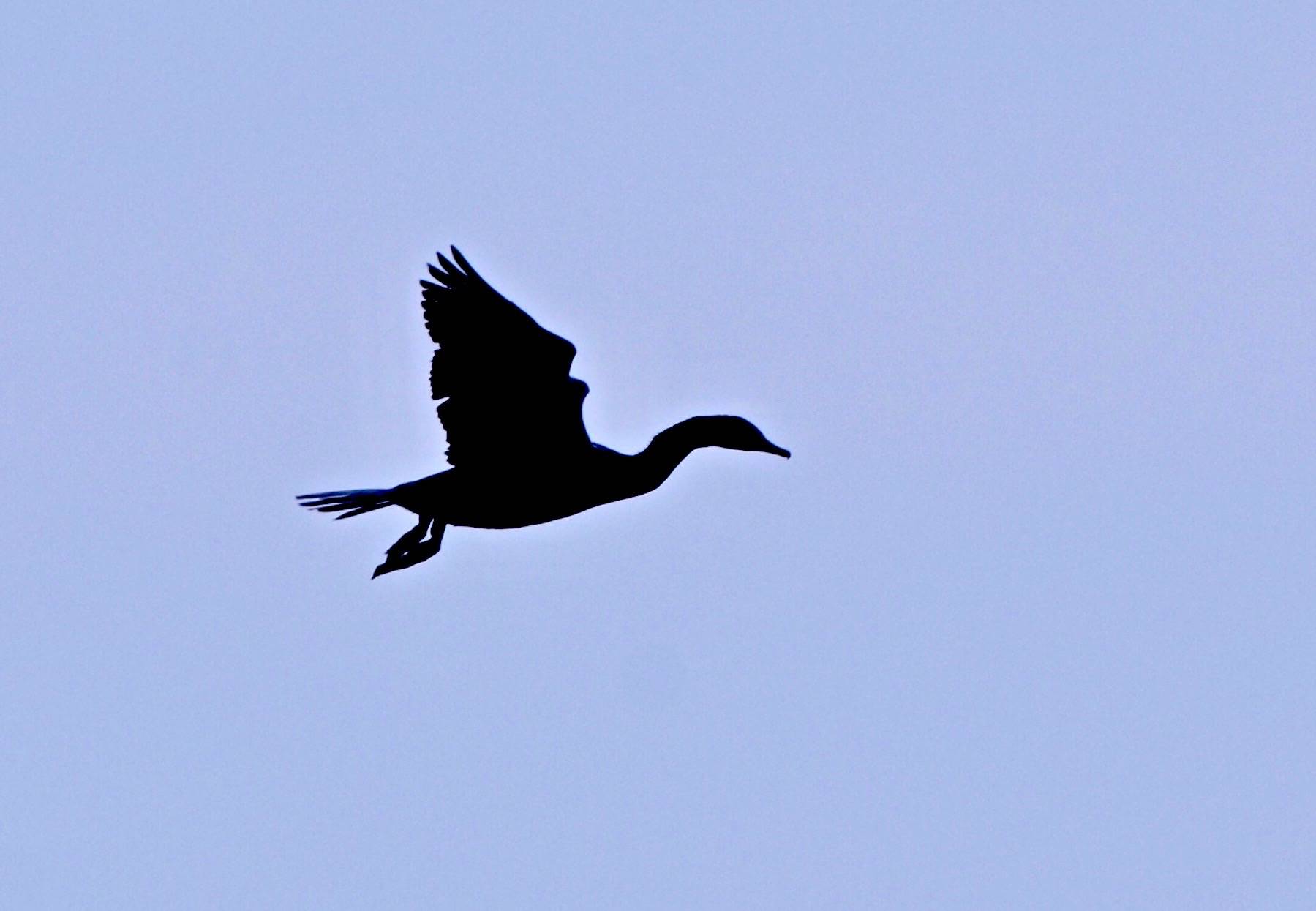
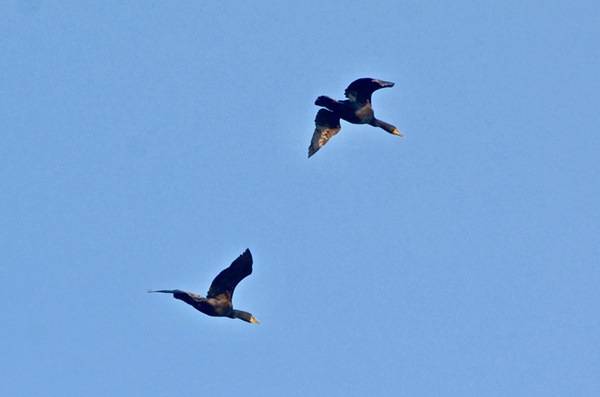
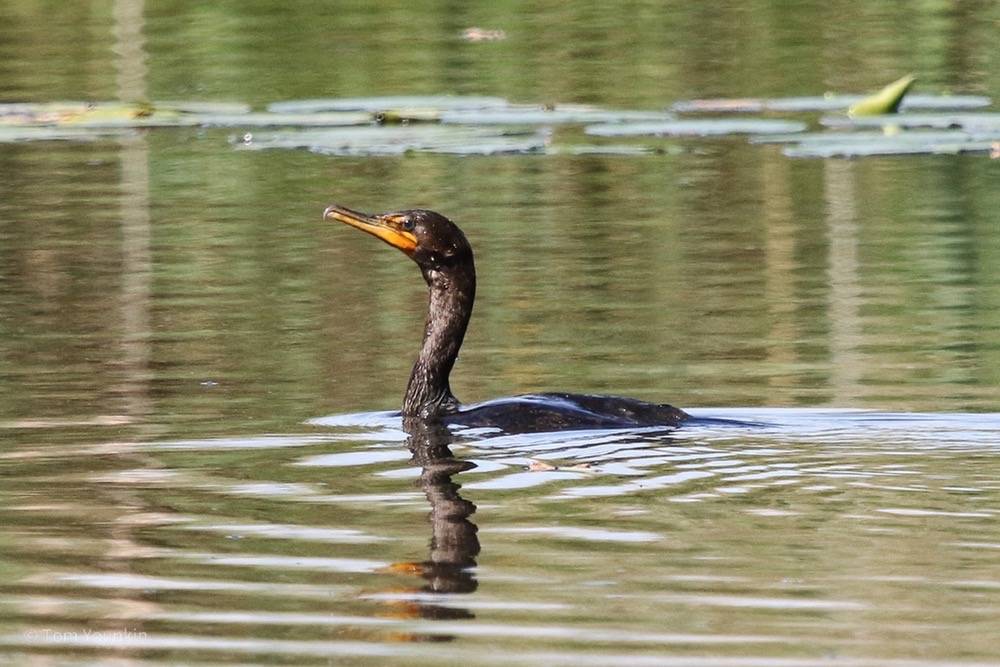
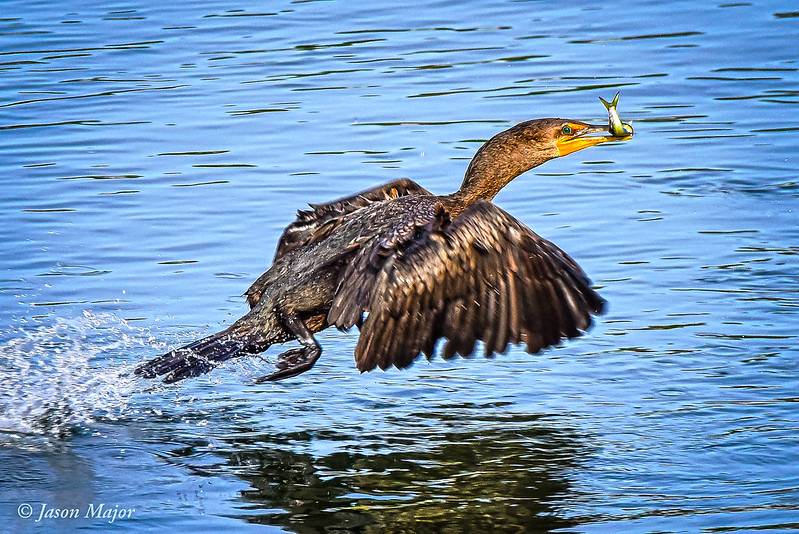
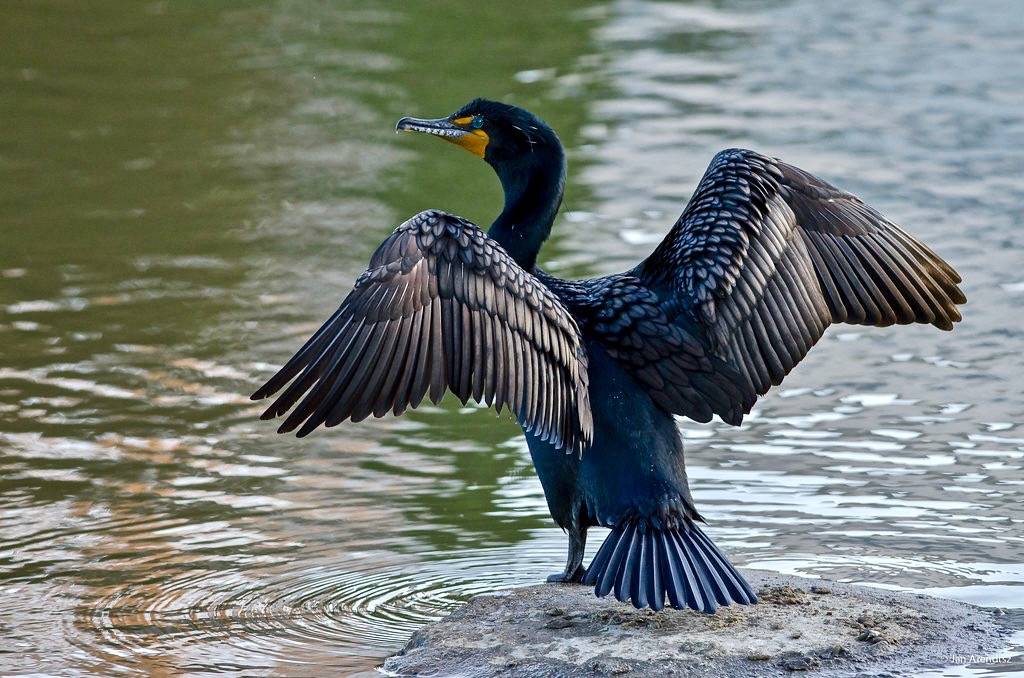
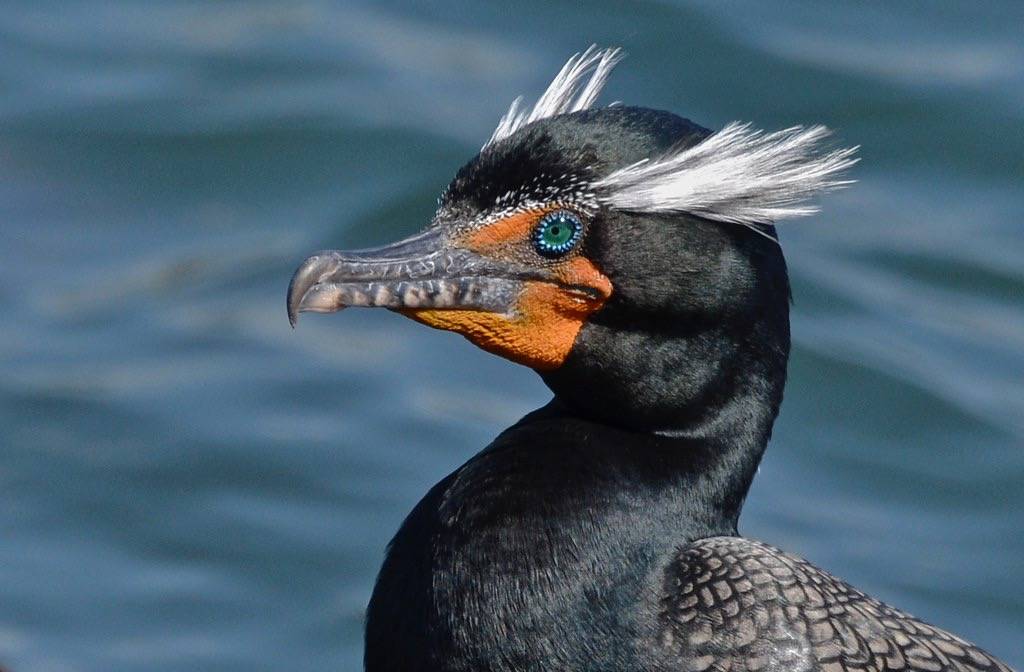
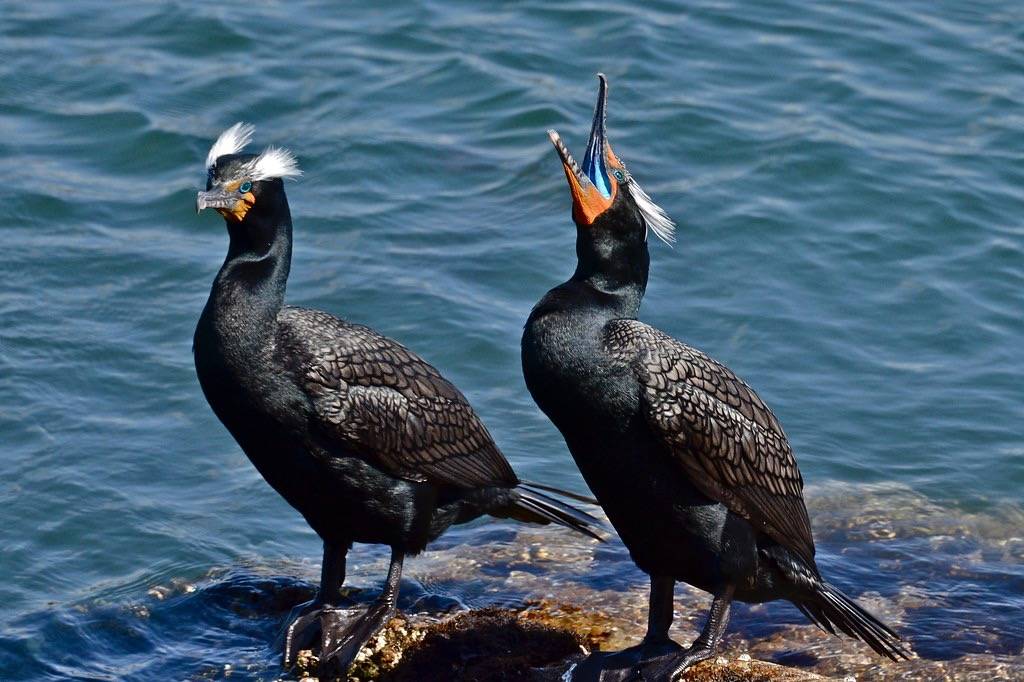
, Black-crowned Night Heron (bottom nests) 05-08-09.jpg?w=350?blur=10)
